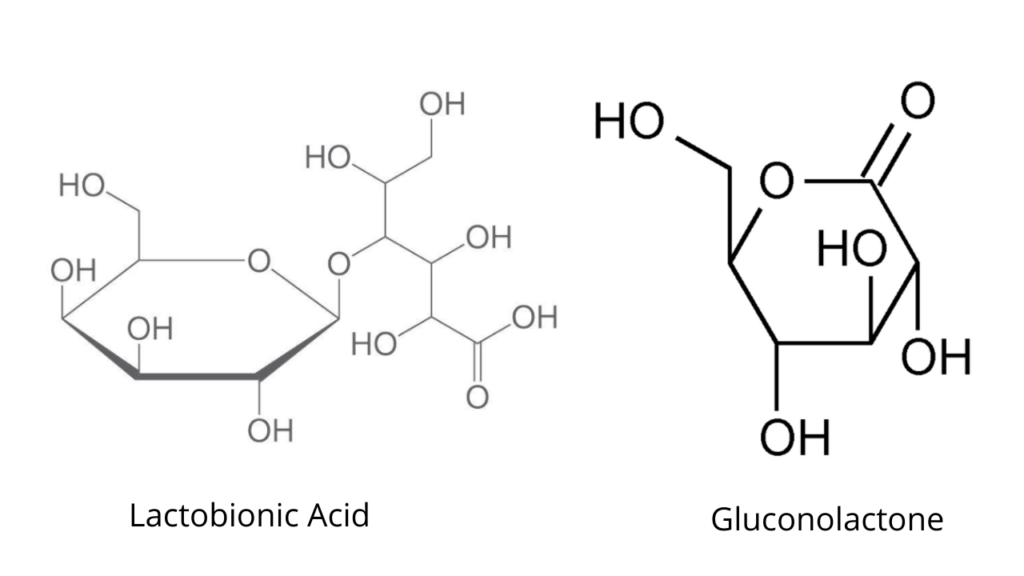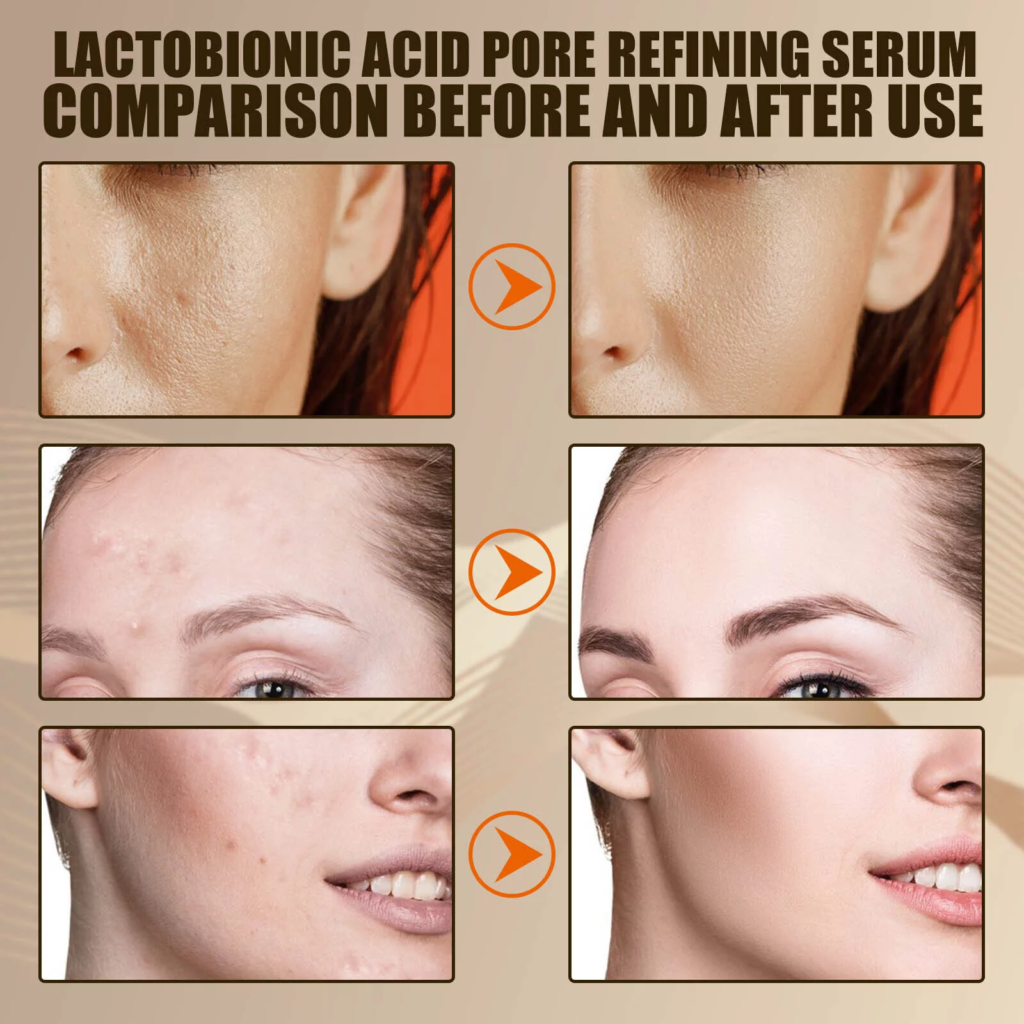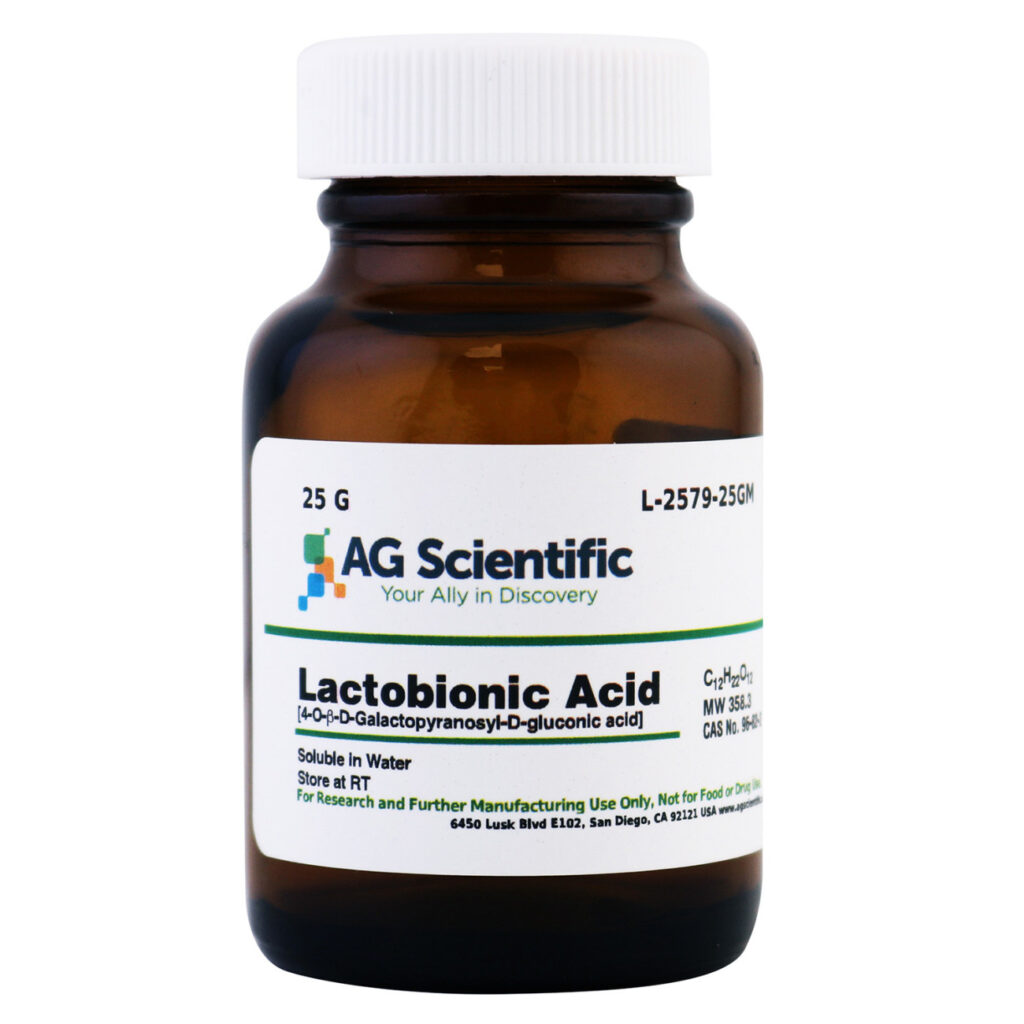Lactobionic acid, a compound derived from lactose, has garnered significant attention in the realms of skincare and medicine. Its distinctive properties and potential advantages make it an exciting ingredient in various products. This article will delve deep into the realm of lactobionic acid, exploring its origins, uses, benefits, and possible side effects. By the end, you will have a comprehensive understanding of this intriguing compound and its applications.
What is Lactobionic Acid?
Lactobionic acid, belonging to the polyhydroxy acid (PHA) family, is a substance extracted from lactose, a natural sugar found in milk. It’s also known as Lactose bionic acid. Unlike other alpha-hydroxy acids (AHAs) commonly used in skincare, lactose bionic acid boasts a larger molecular structure, endowing it with distinctive properties and skin benefits.

History of Lactobionic Bionic Acid
The discovery of Lactose bionic acid can be attributed to the research endeavors of pioneering biotechnologists. Its synthesis dates back to the 1960s, and since then, it has undergone extensive study for its potential applications in various industries, particularly skincare and pharmaceuticals.
Uses of Lactobionic Acid in Skincare
Anti-aging: Turning Back the Hands of Time
Lactobionic acid has gained recognition for its formidable anti-aging prowess. When applied topically, it aids in reducing the appearance of fine lines, wrinkles, and age spots. This is achieved through the process of exfoliation, where the outermost layer of the skin is gently sloughed off, stimulating cell turnover and encouraging the production of collagen and elastin. These essential proteins play a pivotal role in maintaining youthful, supple skin.
Skin Lightening: Illuminating the Path to Radiance
Among the notable applications of lactobionic acid is its role in skin lightening products. It possesses the ability to diminish the appearance of hyperpigmentation, including dark spots and melasma. By impeding the production of melanin, the pigment responsible for skin color, lactobionic acid gradually lightens and evens out the complexion, unveiling a luminous and radiant visage.

Wound Healing: Accelerating the Journey to Recovery
Lactobionic acid’s wound healing properties render it a valuable ingredient in medical treatments. It aids in the regeneration of damaged skin cells, expediting the healing process and mitigating the formation of unsightly scar tissue. Furthermore, its ability to attract and retain moisture creates an optimal environment for wound healing, fostering a speedy and seamless recovery.
Anti-inflammatory: A Calming Balm for Irritated Skin
Inflammation, a common skin concern, can manifest as redness, swelling, and discomfort. Lactose bionic acid boasts anti-inflammatory properties that effectively soothe irritated skin and reduce redness. By inhibiting specific enzymes involved in the inflammatory response, it fosters a calmer and more balanced complexion, offering respite to those plagued by skin sensitivity.
Antibacterial: Nurturing Skin’s Natural Defenses
Lactobionic acid’s antibacterial properties make it a formidable adversary against certain strains of bacteria. It aids in controlling bacterial growth on the skin, reducing the likelihood of acne breakouts and other skin infections. By nurturing the skin’s natural defenses, lactose bionic acid promotes a clearer and healthier complexion.
Antioxidant: Guarding Against the Ravages of Time
As an antioxidant, lactobionic acid combats the damaging effects of free radicals. These unstable molecules contribute to premature aging and skin damage. By neutralizing free radicals, Lactose bionic acid acts as a guardian, protecting the skin from the perils of environmental stressors such as pollution and UV radiation, thus preserving its youthful vitality.
Side Effects of Lactobionic Acid
While lactobionic acid is generally well-tolerated by most individuals, it is essential to be aware of potential side effects.
Irritation: A Hint of Discomfort
In some cases, mild irritation or redness may occur when using Lactose bionic acid, particularly for individuals with sensitive skin. It is advisable to perform a patch test before applying it to larger areas of the skin and to start with lower concentrations to assess your skin’s tolerance. The quest for vibrant skin should not come at the expense of comfort.
Allergic Reaction: Proceed with Caution
Though rare, allergic reactions to lactobionic acid can transpire. Should you experience symptoms such as itching, swelling, or difficulty breathing after using a product containing Lactose bionic acid, discontinue use immediately and seek medical attention. The path to skincare success should always be accompanied by vigilance and attentiveness to one’s body.
How to Apply Lactobionic Acid
Lactobionic acid can be utilized either topically or orally, depending on the desired effect and product formulation.
Topical Application: Nourishing the Skin’s Surface
Topical creams, serums, and lotions enriched with lactobionic acid are widely available. To embark on a skincare journey with lactose bionic acid, adhere to the instructions provided by the product manufacturer and apply the product to clean, dry skin. Begin with a modest amount, gradually increasing the frequency and concentration as your skin acclimates to its presence.
Oral Supplements: Unlocking Inner Radiance

Lactobionic acid is also available in oral supplement form, primarily for its systemic effects. If considering oral supplements, it is crucial to consult with a healthcare professional to determine the appropriate dosage and to ensure compatibility with any existing medications or medical conditions. The pursuit of well-rounded well-being necessitates informed decisions and expert guidance.
Safety of Lactobionic Acid
Pregnancy and Breastfeeding: Nurturing with Care
As with any skincare or dietary supplement, it is advisable for pregnant or breastfeeding individuals to consult their healthcare provider before using lactobionic acid. While there is no specific evidence indicating harm, it is always best to err on the side of caution. Embracing the journey of motherhood should be accompanied by thoughtful consideration and guidance from healthcare professionals.
Children: Guiding Little Steps
The use of lactose bionic acid in children should be discussed with a pediatrician. Given their developing skin and unique needs, seeking professional guidance is essential to ensure safe and appropriate use. Nurturing young skin requires a delicate touch and expert advice.
Other Medications: Harmonizing with Care
If you are currently using other skincare products or medications, it is important to inform your healthcare provider or dermatologist about your intention to incorporate lactobionic acid into your routine. They can provide guidance on potential interactions and ensure it complements your existing regimen, ensuring a harmonious and synergistic approach to skincare.
Conclusion
Lactobionic acid holds immense potential for a wide range of benefits, from its anti-aging and skin lightening properties to wound healing and anti-inflammatory effects. Its versatility and gentle nature render it suitable for various skin types and concerns.
However, it is crucial to be mindful of potential side effects such as irritation and allergic reactions. By understanding how to properly use Lactose bionic acid and considering safety precautions, individuals can make informed decisions about incorporating it into their skincare or supplement routine. Remember to consult healthcare professionals for personalized advice and recommendations.
Summary of the Benefits and Side Effects of Lactobionic Acid
Lactobionic acid, derived from lactose, offers numerous benefits for the skin and potential systemic effects. Its advantages include anti-aging, skin lightening, wound healing, anti-inflammatory, antibacterial, and antioxidant properties.
However, it is essential to be aware of potential side effects such as irritation and rare allergic reactions. Lactose bionic acid can be used topically or taken orally, depending on the desired effects and product formulation.
Safety considerations include consulting healthcare professionals regarding pregnancy, breastfeeding, children, and potential interactions with other medications. By understanding the benefits, side effects, and proper usage of lactobionic acid, individuals can make informed decisions about incorporating it into their skincare or supplement routine.
Resources for Further Information
For more detailed information on lactobionic acid, its uses, and scientific studies, consider exploring the following resources:
- Scientific Journal Articles – Search for relevant studies and research papers on lactose bionic acid.
- Dermatologist Websites – Visit trusted dermatologist websites for professional insights and advice on skincare ingredients.
- Skincare Forums and Communities – Engage with fellow skincare enthusiasts and experts in online communities to gain firsthand experiences and recommendations.
Remember to approach online information with caution and prioritize reliable sources backed by scientific evidence.
By harnessing the potential of lactobionic acid and understanding its benefits and limitations, individuals can make informed choices to improve their skincare routines and overall well-being.
Frequently Asked Questions about Lactose bionic Acid
Is lactobionic acid suitable for all skin types?
Lactobionic acid is generally well-tolerated by most skin types, including sensitive skin. Its larger molecular structure makes it a gentler option compared to other alpha-hydroxy acids. However, as with any new skincare ingredient, it is advisable to perform a patch test and consult with a dermatologist if you have specific concerns or known sensitivities.
Can lactose bionic acid be used alongside other skincare ingredients?
Lactobionic acid can be used alongside other skincare ingredients, but it is important to consider potential interactions. Some ingredients, such as retinoids or other exfoliating agents, may increase skin sensitivity when used together. It is recommended to introduce new products gradually and observe how your skin responds. Consulting with a skincare professional can help you create a balanced and effective skincare routine.
How long does it take to see results when using lactobionic acid?
The timeframe for visible results may vary depending on individual factors such as skin type, the specific concern being addressed, and the concentration of Lactose bionic acid in the product. Generally, consistent use over several weeks is necessary to notice significant improvements. Patience and adherence to a skincare routine are key to achieving desired outcomes.
Can lactobionic acid be used during the daytime, or is it better suited for nighttime use?
Lactobionic acid can be used both during the daytime and at night. However, it is important to note that it can increase the skin’s sensitivity to the sun. Therefore, it is crucial to apply broad-spectrum sunscreen with a high SPF during the daytime when using lactobionic acid to protect the skin from harmful UV rays.
Are there any specific precautions to consider when using Lactose bionic acid?
While Lactose bionic acid is generally safe for use, there are a few precautions to keep in mind:
- Avoid applying lactobionic acid to open wounds or broken skin.
- If you experience severe or persistent irritation, discontinue use and consult a healthcare professional.
- Follow the instructions provided by the product manufacturer regarding concentration, frequency, and duration of use.
- Store lactobionic acid products in a cool, dry place away from direct sunlight to maintain their efficacy.
Can lactobionic acid be used alongside professional skincare treatments, such as chemical peels or laser procedures?
When considering professional skincare treatments, it is crucial to inform your skincare specialist or dermatologist about your use of lactobionic acid. Some treatments may require temporary discontinuation of Lactose bionic acid products to avoid potential interactions or excessive skin sensitivity. Your skincare professional can guide you on the best approach to integrate lactose bionic acid into your overall skincare regimen.
Are there any dietary sources of Lactose bionic acid?
Lactobionic acid is primarily derived from lactose and is not commonly found in dietary sources. It is predominantly used in topical skincare products or oral supplements designed for specific purposes.
Can Lactose bionic acid be used for conditions other than skincare?
While lactobionic acid is mainly known for its skincare applications, it has also shown promise in pharmaceutical research. Studies have explored its potential benefits in areas such as ocular health, liver protection, and drug delivery systems. However, further research is needed before definitive conclusions can be drawn regarding its effectiveness in these areas.
Remember, it is always advisable to consult with healthcare professionals or dermatologists for personalized advice and recommendations based on your specific needs and concerns.
